Arsenal have a fine recent tradition of players who polarise supporters. Theo Walcott, Olivier Giroud, Mesut Özil, Aaron Ramsey, Alex Oxlade Chamberlain. As the Gunners have travelled on an upward trajectory for the last couple of seasons, it feels like there have been fewer of those players with a largely very competent transfer strategy.
However, I very much have the feeling that Kai Havertz is going to be a player that divides opinion. Though most would concede he did not live up to his potential at Chelsea there is still a lot of variance in how people viewed his level of talent and his level of culpability for his inconsistency in West London. Some of those doubts will have followed him to the north of the River Thames.
Many of us viewed him as a straight swap for Granit Xhaka in the midfield but I think the reality will be more complex than that. Arteta isn’t so much ripping up last season’s template as he is trying to tailor it, to coax it into new fangled angles. Havertz played as an eight and a nine during pre-season but, I think, the truth is that he is going to do some eighting, some nineing and some tenning in an Arsenal shirt, often in the same game.
Against Nottingham Forest on Saturday, he certainly did all those things. He also swapped positions with Gabriel Martinelli on occasion, appearing on the left touchline, allowing Martinelli to drift inside. This is the sort of functionality that Xhaka, for all his toil, doesn’t really give you. In different phases of play, Havertz popped up in different places, though he was asked to do largely the same things, just in different parts of the pitch as the game progressed.
Havertz out wide left in this pic, happened a lot in that half. Far more rotation on the left between him and Martinelli (it did happen when Xhaka was here but not as often as I’ve seen in this half). Another thing to look for this season. pic.twitter.com/TBGHpUCpjp
— Tim Stillman (@Stillmanator) August 12, 2023
The most obvious aspect of Arteta’s line-up on Saturday was that he wanted to squeeze an extra midfielder into the team against an opponent who were likely to sit back and soak up pressure. So Gabriel came out of the defence and Thomas Partey started nominally as a right-back but really spent much of his time in midfield. It meant that Arteta could cram Partey, Rice, Havertz and Nketiah into his eleven against a conservative opponent.
I think the other facet of Arteta’s selection was keeping Forest under pressure. He picked the players most likely to win the ball back high up the pitch and we saw the impact of that in the opening 30 minutes as Forest were suffocated by the home side’s pressure. As for Havertz, those expecting Havertz to do the same things and stand in the same places as Granit Xhaka are going to find him difficult to parse.
Let’s first look at Havertz’s heatmap from the game courtesy of WhoScored (remembering that he spent the last 17 minutes plus stoppage time at centre-forward, more on which anon). While the most prominent ‘blob’ is indeed in left central-midfield (that was his principal position after all), we can see he was quite thinly spread around the pitch.
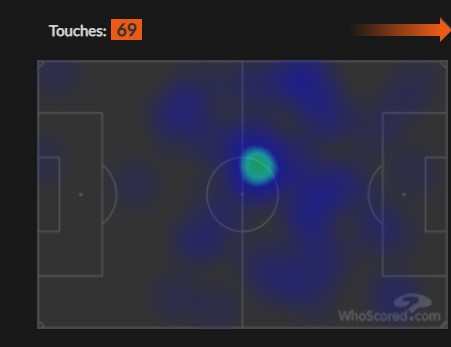
Now let’s look at the heatmaps of his midfield partners, firstly Martin Odegaard. We can see his ‘blob’ is far more prominent- not least because he had more touches- but the area he was being asked to operate in was a lot more defined.
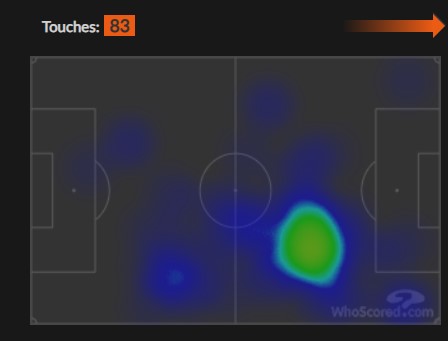
And it’s much the same with Declan Rice (again, he was given a far more ‘engaged’ on the ball role and had a lot more touches). There is a more definite corridor that Rice operated in during the game and some of it overlaps with Havertz’s left eight area with Partey inverting from the right.
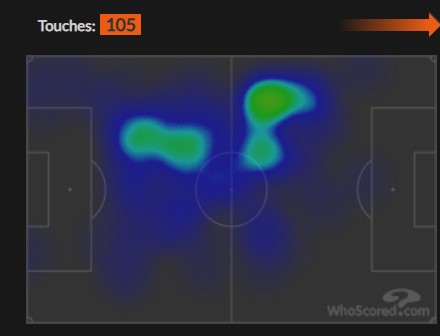
Basically, Havertz wasn’t really a part of Arsenal’s build-up in the game, his was a largely off-ball role, which is in line with what Granit Xhaka was asked to do (I wrote about how his on-ball involvement dipped enormously when he was asked to take on the left eight role here). However, Xhaka very much had a strip of the pitch, an alleyway in that left channel. Havertz was asked to do something a little different. Let’s look at some examples.
Rotation of positions
Effectively Arsenal played with a kind of box midfield with Partey the right six and Odegaard the right eight and Rice the left six and Havertz the left eight. Look at this example here.

Rice takes the ball at the base of the midfield with Partey at right-back, which is roughly what you would expect.

As Rice lays the ball off, he shuffles over to the left so that Thomas Partey can move into right central midfield.
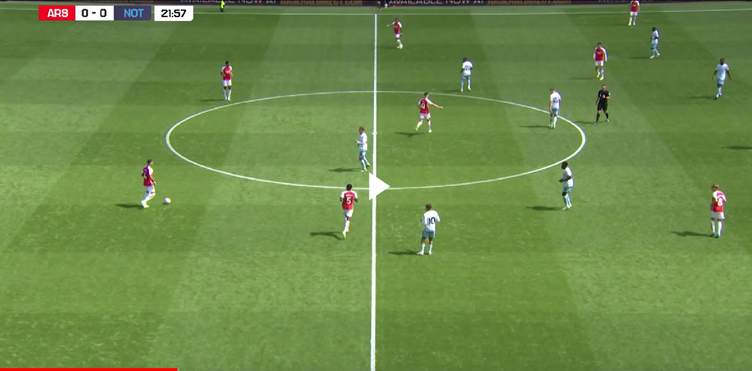

As Rice shuffles to the left, we see him signal to Havertz to take up a more central role ahead of him beside Eddie Nketiah.

Compare the shape here to the first screen shot in the sequence, in nine seconds, the shape of the Arsenal midfield has changed in possession as they have progressed the ball. There were lots of slightly different examples of this where Havertz took up different positions.

Here we see Havertz (red) and Nketiah (yellow) swapping positions.
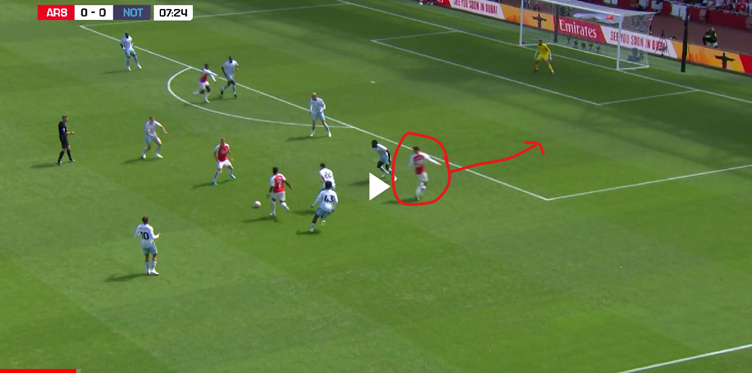
Or here, we can see that Havertz has seen some space in the right half space and he has made a run into that channel. Again, this isn’t the type of run we saw from Xhaka last season.
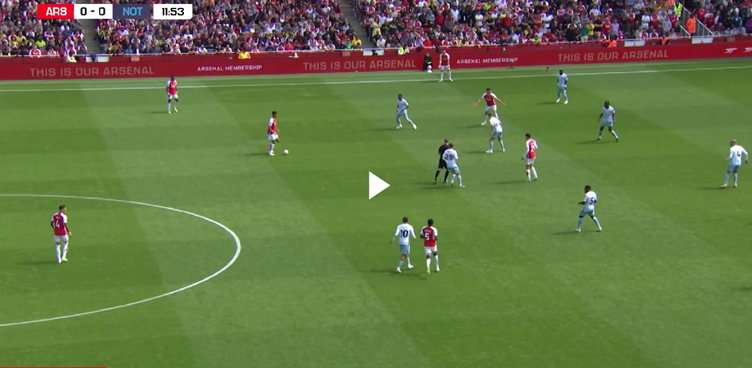
When Rice shifted to the left, Havertz usually drifted into more central pockets, as we see here (we see Rice pointing again here).

The move ends with him playing a good ball around the corner for the onrushing Rice which, sadly, amounts to nothing.
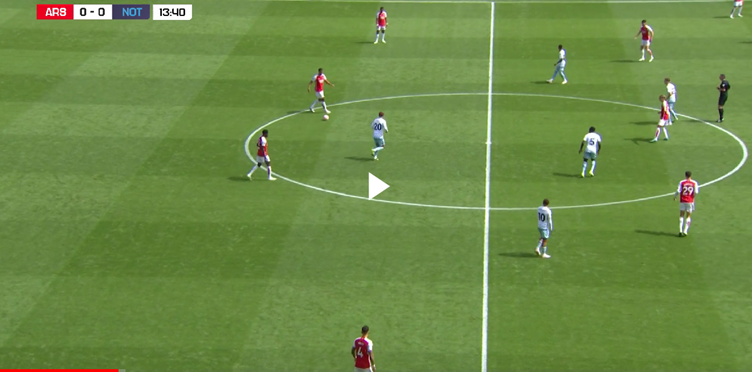
Or here, as Arsenal build with Partey at the base of midfield and Ben White out at right-back, Havertz is to the right, Odegaard central and Rice to the left.

Or in this example, Martinelli has drifted into the support striker position, so Havertz has filled his position on the left wing.

Much the same happens here. This time Martinelli (black) makes a run towards the right channel, Eddie (yellow) stays central and Havertz (red) moves to the left. There were hundreds of these rotations during the game and Havertz was variously asked to be a left eight, a right eight, a left winger or a more central ten.
Penalty area runs
We also saw how much Arteta wants to take advantage of his physical presence in the penalty area to behave like a striker. Nearly every single time the ball was in a crossing position on the right hand side, Havertz was in the area, often ghosting towards the back post (he scored a goal against Barcelona in pre-season with a back post effort). Just look at how many times it happened in the first half alone.
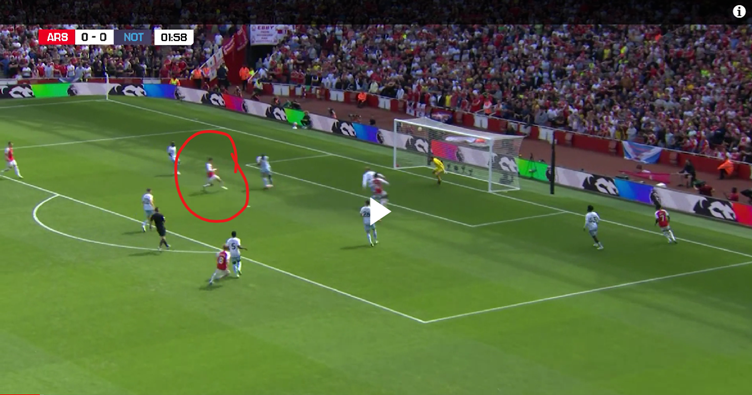
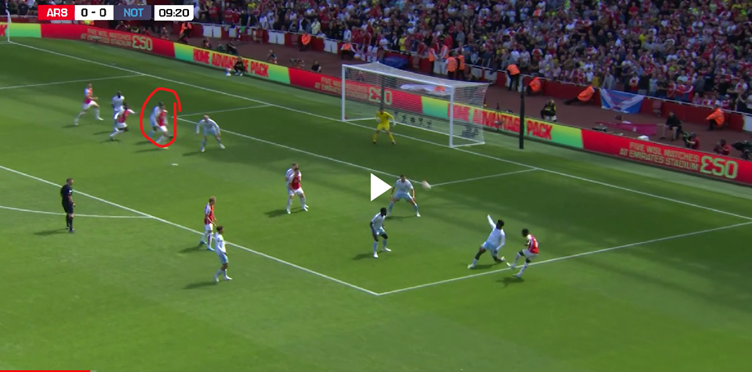
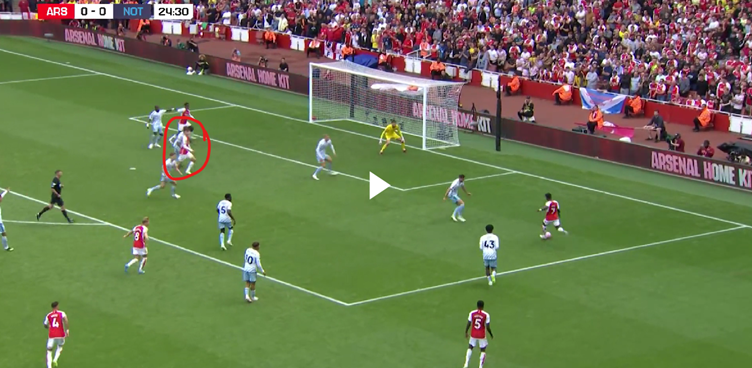
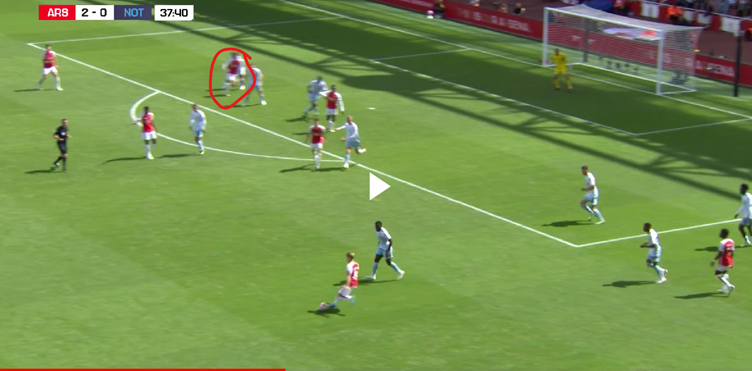
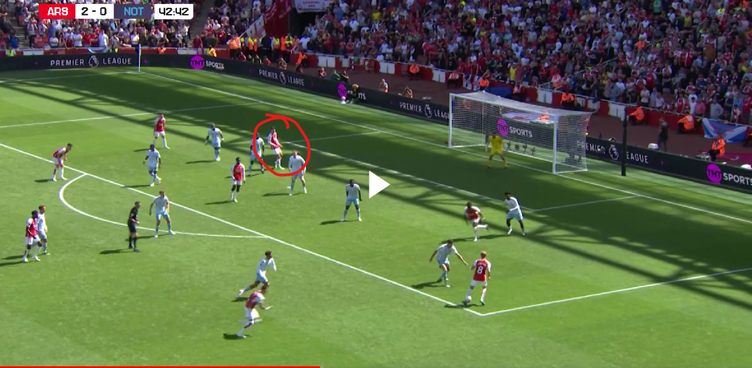

For Nketiah’s goal, Martinelli works his magic down the left and we again see Havertz lurking on the back post.
Arsenal used his physical presence in other ways too. Alas, none of the camera angles on the television footage illustrate this, so take my word for it from my vantage point in the upper tier- for each goal kick, or any time Ramsdale had the ball at his feet, Nketiah and Havertz switched positions. This was just in case Ramsdale needed to play long, where Havertz’s ability in the air could be utilised.
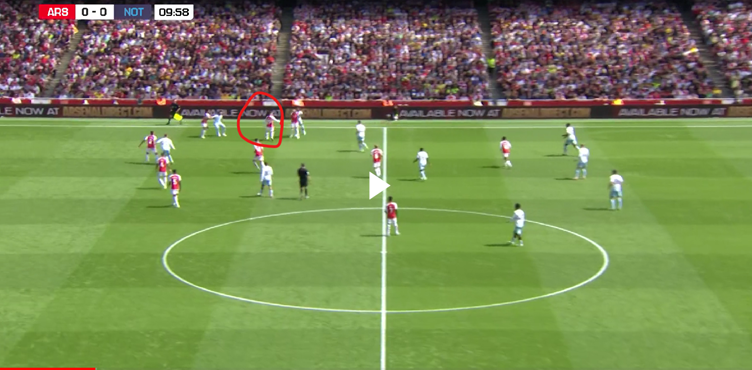
This was a Matt Turner goal kick and Havertz is positioned right into the melee to compete for the aerial ball. The German spent the last 17 minutes of the game plus injury time as a de facto centre-forward when Nketiah was replaced by Trossard but, in truth, Trossard and Havertz consistently swapped roles.
However, having Havertz as the centre-forward, especially in the final throes of a game that is stretched, allows Arsenal to explore…
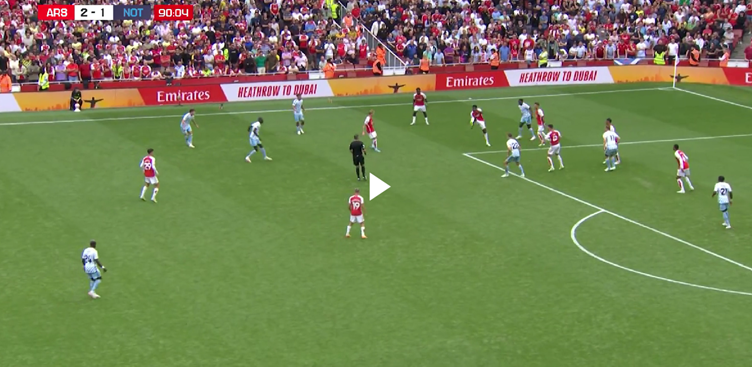
The up ‘n’ under.
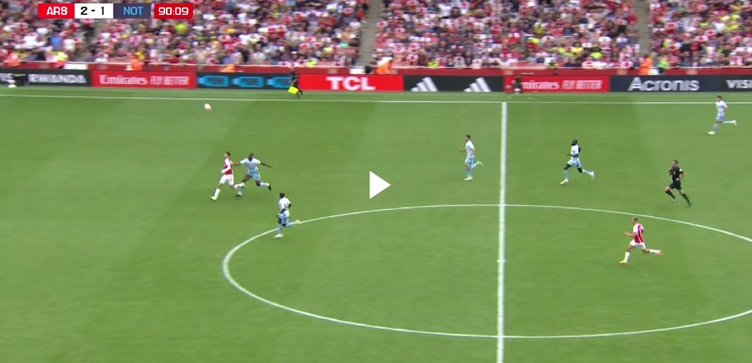
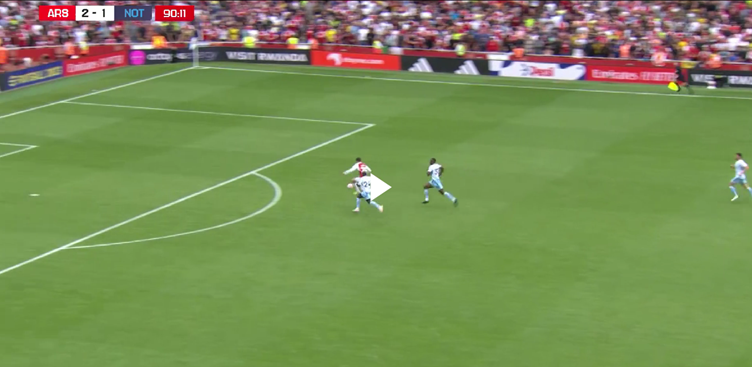
It gave Arsenal this presentable situation as Forest chased an equaliser. Unfortunately, Havertz was blowing out of his arse so hard at this point that he could have played the solo from ‘Baker Street’ with his bum cheeks, so the chance did not materialise.
What is clear, already, I think is that Kai Havertz is not being asked to play the role Granit Xhaka was and we are all going to have to retrain our eyes and minds a little. Chelsea could not seem to work out whether Havertz was an eight, a ten or a nine. It seems like Arteta believes that he is all of those things, often in the space of a few minutes.
Follow me on Twitter @Stillmanator


